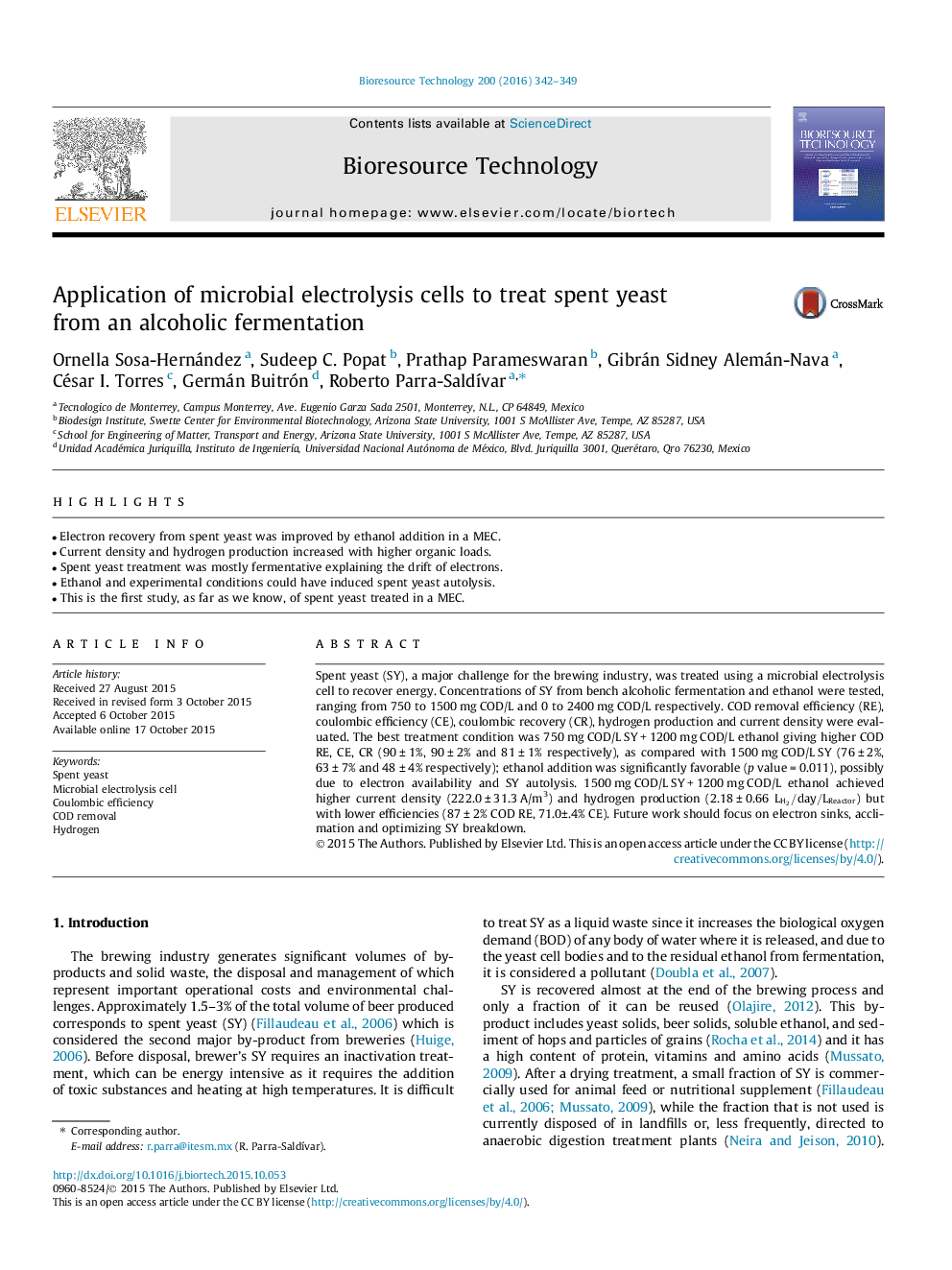| Article ID | Journal | Published Year | Pages | File Type |
|---|---|---|---|---|
| 7072638 | Bioresource Technology | 2016 | 8 Pages |
Abstract
Spent yeast (SY), a major challenge for the brewing industry, was treated using a microbial electrolysis cell to recover energy. Concentrations of SY from bench alcoholic fermentation and ethanol were tested, ranging from 750 to 1500 mg COD/L and 0 to 2400 mg COD/L respectively. COD removal efficiency (RE), coulombic efficiency (CE), coulombic recovery (CR), hydrogen production and current density were evaluated. The best treatment condition was 750 mg COD/L SY + 1200 mg COD/L ethanol giving higher COD RE, CE, CR (90 ± 1%, 90 ± 2% and 81 ± 1% respectively), as compared with 1500 mg COD/L SY (76 ± 2%, 63 ± 7% and 48 ± 4% respectively); ethanol addition was significantly favorable (p value = 0.011), possibly due to electron availability and SY autolysis. 1500 mg COD/L SY + 1200 mg COD/L ethanol achieved higher current density (222.0 ± 31.3 A/m3) and hydrogen production (2.18 ± 0.66 LH2/day/LReactor) but with lower efficiencies (87 ± 2% COD RE, 71.0±.4% CE). Future work should focus on electron sinks, acclimation and optimizing SY breakdown.
Related Topics
Physical Sciences and Engineering
Chemical Engineering
Process Chemistry and Technology
Authors
Ornella Sosa-Hernández, Sudeep C. Popat, Prathap Parameswaran, Gibrán Sidney Alemán-Nava, César I. Torres, Germán Buitrón, Roberto Parra-SaldÃvar,
